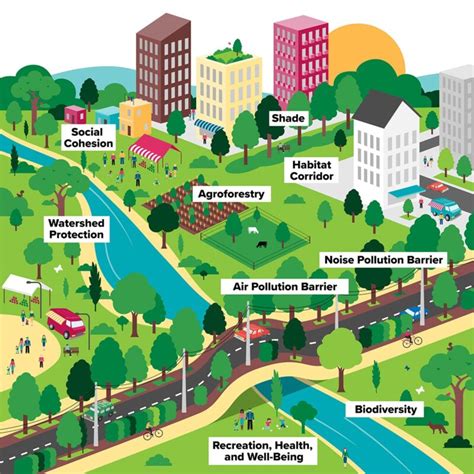The role of trees in urban environments goes far beyond just adding to the aesthetic charm of neighborhoods. Urban forestry plays a critical role in maintaining ecological balance, providing shade, reducing heat island effects, and improving overall air quality. However, many cities around the world are facing a crisis of dwindling tree cover due to various factors, including cost-cutting measures, urban development, and lackadaisical attitudes towards tree preservation. Urban development projects often prioritize cost over the long-term ecological and health benefits provided by trees. This shortsightedness can lead to cities that are less habitable and less resilient to climate challenges.
One significant issue that reflects this crisis is the habitual removal of mature trees under the guise of safety and cost management. Trees are often cut down preemptively after being deemed a risk due to falling branches or potential structural damage to nearby infrastructures. As one commenter pointed out, there are ways to manage these risks without removing the trees entirely. For instance, reinforcing trees with metal struts or employing certified arborists to perform regular maintenance can avert such drastic measures. This reflects a disconnect between short-term solutions and long-term urban planning. Cutting down a tree might save costs today, but it foregoes the multiple benefits that mature trees provide over decades.
Indeed, historic trees hold immense value, holding memories and stories that span generations. The trees that have stood the test of time often become guardians of communal history, having seen more than just the daily hustle and bustle. Such trees connect the past with the present, grounding city dwellers in a sense of continuity and place. In older cities, you’ll find trees that have lived through significant historical events, such as the telegraph’s invention or World War II. Sacrificing these trees for expediency is not just an ecological loss but a cultural one as well.
Thankfully, there are other cities and neighborhoods that have set stellar examples in maintaining and even increasing their urban tree cover. Take London, for instance, where authorities rigorously maintain old trees while planting new ones to keep up with urban development. This city has adopted a proactive stance towards integrating green spaces within their dense urban landscape. London’s approach includes regular pruning of mature trees and replacement of non-native species with native ones to build an ecologically resilient environment. Similarly, Sydney provides an illustration of how socio-economic disparities influence tree coverage, with affluent neighborhoods boasting significantly more greenery compared to poorer suburbs. This disparity calls for a more equitable approach to urban planning where green justice is equally distributed across all neighborhoods.
In contrast, places like Sheffield in the UK present cautionary tales of misaligned incentives. A decision to cut down thousands of street trees was met with public outrage and led to community protests. This situation highlights the importance of community engagement and transparent decision-making in urban planning. The long-term fallout from such measures includes degraded air quality, heightened urban heat islands, and the psychosocial stress associated with losing natural communal spaces. Clearly, simplified solutions like planting new trees elsewhere cannot replace the nuanced roles of established urban trees.
Another important aspect is the role of legislation and public policies that either protect or neglect urban forestry. In some cities, there are stringent laws requiring permits and imposing fines for cutting down mature trees. These legal frameworks can act as deterrents against haphazard tree removal, encouraging residents and developers alike to consider alternatives. Incorporating sustainable tree management strategies such as utilizing drought-resistant species or promoting vertical green spaces can go a long way in urban settings facing constraits in horizontal space. On the other hand, legislative gaps or lax policies result in unchecked tree removal and weaker enforcement, as seen in many suburban developments where the convenience of paving over natural spaces triumphs over ecological considerations.
Ultimately, the clash between urban development and preserving natural green spaces is a battle that reflects our broader approach to sustainable living. Urban planners, policymakers, and residents need to envision the future where densely packed skyscrapers coexist with lush, tree-lined streets. Simple yet effective measures, such as the concept of the ‘sponge city’ which aims to mitigate heavy rainfalls and manage urban water more efficiently, demonstrate that harmonizing urban development with green spaces is not only desirable but essential. Only with a multifaceted approach can cities hope to provide their inhabitants with sustainable and livable environments. The debate over tree management in cities underscores the need for a paradigm shift towards seeing urban trees not as obstacles but as essential elements of resilient and vibrant urban ecosystems.


Leave a Reply